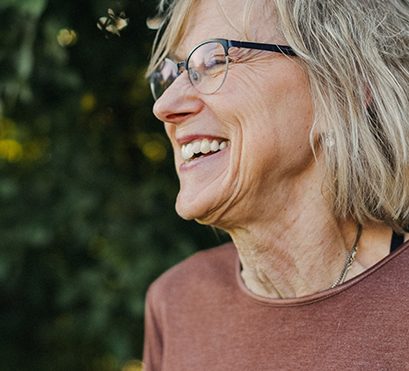Professor Hannele Yki-Järvinen from the University of Helsinki is the 2024 recipient of the Novo Nordisk Foundation’s Jacobæus Prize, which recognises excellence in medical research. Her decades-long work to advance understanding and awareness of the role of liver fat in insulin resistance and diabetes is described by the head of the awarding committee as “ahead of its time.”
Professor Yki-Järvinen began her career in the early 1980s looking at insulin sensitivity and resistance in people with type 1 diabetes. Later, her attention turned to the liver, specifically non-alcoholic fatty liver disease (NAFLD), now known as metabolic dysfunction–associated steatotic liver disease (MASLD).
“Little by little, I realised that the liver was an under-appreciated organ,” she says. “The insulin resistance field was very focused on muscle insulin resistance, but it’s really the liver that determines what your blood sugar level is when you wake up in the morning and also what your cardiovascular risk profile is.”
In 2000, she led and published the first study showing that the more fat there is in the liver, the less sensitive the organ is to insulin and therefore the higher the blood sugar level. This work had profound and ongoing implications for the scientific understanding of insulin resistance and the treatment of people with type 2 diabetes and metabolic syndrome. She and her group have continued their pioneering work in this area over the last two-and-a-half decades.
Inspiring the next generation
Professor Yki-Järvinen has published close to 400 journal articles and book chapters, supervised nearly 30 doctoral students, lectured extensively all over the world, and won numerous awards for her work.
“I am very happy that the Jacobæus Prize this year goes to an excellent female researcher whose contribution to the field is long-standing and often ahead of its time,” says Lena Eliasson, Chair of the Novo Nordisk Foundation’s Committee on Endocrinology and Metabolism, which awards the prize. “With her research, Hannele Yki-Järvinen has greatly improved our understanding of fatty liver disease and type 2 diabetes.”
Professor Yki-Järvinen describes the award as “a huge honour” and hopes that it will help inspire other young Finnish scientists to take up research in this area.
“It’s just like if a Finn would win an Olympic gold medal. It would be a huge inspiration for the younger generation.”
Established in 1939, the Jacobæus Prize is the Foundation’s oldest prize and is awarded to researchers within physiology or endocrinology. It is accompanied by an award of DKK 1.5 million, of which DKK 1.25 million is for research and the rest a personal award. Recipients are invited to give a lecture on a topic relevant to their research. Professor Yki-Järvinen will give hers at a symposium in Lund, Sweden, on 21 October 2024.
Uncovering the role of liver fat
It was during her time as a postdoctoral fellow in Phoenix, Arizona in the mid-1980s that Professor Yki-Järvinen first became curious about the role of the liver in insulin resistance.
“There I learned from the study I performed for two years that the liver is very sensitive to insulin compared to muscle,” she explains. “Then I wanted to know why the liver is very sensitive to insulin in some patients and resistant in others.”
Later, during her residency in internal medicine back in Finland, she encountered a type 2 diabetic patient whose liver filled almost the entire abdominal area and who was extremely resistant to insulin. She decided to examine how liver fat was related to hepatic insulin sensitivity and discovered that liver fat content was a very good predictor of how sensitive the organ was to insulin. She describes this as “an eye-opening experience” and one that led to the seminal 2000 paper.
The discovery had significant practical implications for diabetes treatment. For instance, for type 2 diabetes patients with a low level of liver fat, a low insulin dose is sufficient to regulate blood sugar. For those with higher levels, more insulin is needed, perhaps alongside dietary changes and specific treatments that can help reduce the amount of liver fat and thus increase the efficacy of insulin.
The struggle to diagnose
Screening to determine liver fat content and, if needed, to diagnose MASLD is therefore crucial to prescribing the most effective treatments for type 2 patients. This is one area where work is still needed, according to Professor Yki-Järvinen.
“To make the diagnosis of MASLD, you must first identify fat accumulation in the liver. But there are currently no tools to do this in general practice, which means MASLD is still an incidental finding. This means most fatty liver cases will go unnoticed,” she says. “And then the tools we have are usually not sensitive or specific enough to adequately diagnose. So while the awareness of MASLD has increased, the tools we have to diagnose are still quite primitive.”
MASLD can also lead to serious liver damage in some cases. Professor Yki-Järvinen is hopeful that her work has contributed to greater awareness of this among diabetologists, many of whom now monitor for complications in the liver as well as in the eyes, heart, kidneys, and elsewhere.
Questions still to answer
More recently, her attention has turned to the causes of MASLD, particularly the role of genetics and how this interacts with other factors.
In recent years a major focus of the research of Professor Yki-Järvinen’s group has been to understand how genetic variants predispose to liver disease but protect from cardiovascular disease. These studies have shown that genetic factors strongly influence the composition of liver fat, the routes that lead to fat synthesis in the liver, and circulating fats and lipoproteins (proteins that transport fats). This has implications for the monitoring and treatment of MASLD.
It is the unanswered questions such as these and a deep-seated curiosity about the human body that continue to drive Professor Yki-Järvinen.
“Research is a lot of work and takes a lot of patience,” she says. “But then there are brief moments that make everything seem really worthwhile.”
She finds inspiration each time she sees medical professionals treating patients based on what she and others have shown in their research.
“On a visit to Peru in 2014, I met a resident who had one of our treatment papers in his pocket, which they had all been told to read,” she recalls. “I asked if it was because of my visit and he said, ‘no, this has been the practice for many years.’ This was indeed very rewarding to see that what you do actually ends up in the clinic and helps patients.”









